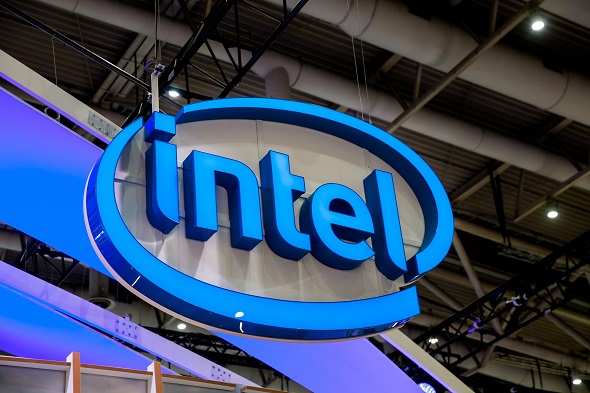
Intel’s Pat Gelsinger
Speculation abounds about Pat Gelsinger’s first public appearance as CEO of Intel at a webinar (5 pm Eastern Time) today that will capture close attention from a host of the company’s core audiences: customers, business partners, employees, industry and financial analysts – and the HPC community.
The webinar, confidently called “Intel Unleashed: Engineering the Future,” comes at a critical moment for Gelsinger and for his re-adoptive company. Since Intel announced in January that its former CTO would return from eight-plus years running VMware, Gelsinger presumably has devoted his first weeks back at Intel to taking stock of the company and to strategic planning. These past two months have had an upbeat feel for Intel and its new chief. Gelsinger’s hiring has been well received, reflected in the more than 30 percent year-to-date rise in Intel’s stock price (in contrast with revived rival AMD shares, down more than 10 percent YTD after a three-year run up).
Regardless of the positive sense about the company, questions and tests lie ahead, Intel having fallen behind in its server processor price/performance battle with AMD, whose EPYC 7300 Series “Milan” 7nm CPUs drew rave reviews at launch last week. Intel will issue its response on April 6 when it announces 3rd Gen Intel Xeon Scalable “Ice Lake” chips along with additions to its hardware and software portfolio for data centers, 5G and edge infrastructure.
Whether Gelsinger addresses those questions today is unknown. In the high-end data center and HPC markets, they include:
- The status of the delayed “Ponte Vecchio” 7nm GPU, to be implemented in the Aurora exascale system for Argonne National Laboratory. Problems with Ponte Vecchio have forced delay in shipping Aurora, originally scheduled for 2021 and to have been the U.S.’s first exascale supercomputer, now expected to be the HPE-Cray Frontier system, powered by AMD CPUs and GPUs, at Oak Ridge National Laboratory. Ponte Vecchio and Ice Lake are part of Intel’s larger “xPU” multi-architecture processor strategy and the company’s larger message: Intel days as a CPU company are over.
- Chip fab outsourcing. Last July, former CEO Bob Swan disclosed Intel may outsource some production of Ponte Vecchio to a third-party semiconductor foundry – widely assumed to be TSCMC (Samsung is another possibility), with which Intel has an existing relationship and which produces CPUs and GPUs for AMD.
- The fate of 3D XPoint, non-volatile memory technology developed jointly by Intel and Micron Technology and used in Intel’s Optane high performance memory product line. Micron recently announced it is abandoning development of 3D XPoint and its fab, clouding Optane’s future.
Of today’s webinar, OrionX.net consultancy’s Shahin Khan, said, “This is a new kind of event for the company and will receive global attention from the financial community, policy makers and the industry. The opportunity is to provide an overall vision of the future that is aligned with the company’s many strengths, project confidence and unify all key market segments, including servers and accelerators.”

AMD President and CEO Dr. Lisa Su
As for the HPC community’s perspective, Khan said it “will be looking for signs of how HPC is viewed and positioned inside the company. Progress on the Xe (GPU product line) chips appears to be good based on recent glimpses that the company has shared. Reconfirmation or acceleration of the Aurora schedule would certainly be reassuring.”
Appearing yesterday on CNBC’s “Squawk Box,” industry analyst Patrick Moorhead, founder and principal analyst of Moor Insights & Strategy, said, “I think what we’re going to see this week from Pat Gelsinger is essentially what Bob Swan had promised for the end of January, which was deep details on what they’re going to do with manufacturing. And I also think we’ll see some disclosures on how certain products are doing,” Moorhead added, possibly referring to the Ponte Vecchio GPU.
On the upbeat aura around the arrival of the new CEO, Moorhead said, “I think what Gelsinger brought to the table, he brought a level of confidence. I think investors were looking for an engineer at the helm, and what they got was a very motivated engineer, and I think that has been what has been driving the (Intel stock price) run up.”
In the view of Dan Olds, chief research officer at analyst firm Intersect360, Ponte Vecchio is now at the core of Intel’s HPC positioning.
“That’s going to be a key to the future that they have in the data center and HPC and AI,” he said. Not only would positive Ponte Vecchio developments help restore Intel’s battered GPU credibility, it could put Intel on a path toward CPU-GPU integration, already under way at AMD with EPYC CPUs and Instinct MI100 GPUs, to be implemented within the Frontier and El Capitan exascale supercomputers.
 “I think that on a CPU-to-CPU basis, it’s going to take Intel some time to catch up with where AMD is right now,” Olds said. “This is sort of a replay of history from back in the Opteron (see below) days. But Intel, if they have some news they can share that’s impressive about Ponte Vecchio, that can change the flavor of the argument from just talking about CPUs to talking about integrated accelerators – GPUs with CPUs. That could be a very compelling story for Intel provided the progress is there and the data is there.”
“I think that on a CPU-to-CPU basis, it’s going to take Intel some time to catch up with where AMD is right now,” Olds said. “This is sort of a replay of history from back in the Opteron (see below) days. But Intel, if they have some news they can share that’s impressive about Ponte Vecchio, that can change the flavor of the argument from just talking about CPUs to talking about integrated accelerators – GPUs with CPUs. That could be a very compelling story for Intel provided the progress is there and the data is there.”
References to Opteron come up frequently among HPC industry watchers – Opteron was an AMD x86 chip that more than 10 years ago took the data center server market by storm, along with significant market share from Intel. Just as Opteron drove AMD to a strong competitive position, so is EPYC.
Steve Conway, senior adviser, HPC Market Dynamics, at industry analyst firm Hyperion Research, said the overriding challenge facing Intel is altering its business model in the face of rising competition.
 “It’s a different business model for the company, that’s the most important thing even beyond the technical aspects of it,” Conway told us recently. “Because Intel for decades, since they’ve been making chips, their business model has been the huge investments in fabs and then the role of the company is to keep the fabs busy. When you’re close to being the only game in town that’s a great business model, when you don’t have serious competition. But it’s an internally focused business model to a large extent. Once you have competition then you really need to turn outward toward the markets and let the markets drive what you do to a much greater extent. So I think Intel is in a transition mode, and they know that, they’re smart people, they’re trying to figure out how to adapt their business model to a more competitive marketplace. I think that’s what’s going on. They’re going to outsource some (chip manufacturing) as part of that. To me, the real question around Intel is, to what extent will they outsource to other fabs? And on what timetable?”
“It’s a different business model for the company, that’s the most important thing even beyond the technical aspects of it,” Conway told us recently. “Because Intel for decades, since they’ve been making chips, their business model has been the huge investments in fabs and then the role of the company is to keep the fabs busy. When you’re close to being the only game in town that’s a great business model, when you don’t have serious competition. But it’s an internally focused business model to a large extent. Once you have competition then you really need to turn outward toward the markets and let the markets drive what you do to a much greater extent. So I think Intel is in a transition mode, and they know that, they’re smart people, they’re trying to figure out how to adapt their business model to a more competitive marketplace. I think that’s what’s going on. They’re going to outsource some (chip manufacturing) as part of that. To me, the real question around Intel is, to what extent will they outsource to other fabs? And on what timetable?”
Whatever moves Intel makes now, taking more price/performance lumps from AMD seems unavoidable – the upcoming Ice Lake announcement notwithstanding. It’s yet to be seen where, when and how Gelsinger will guide the company, but today’s webinar may provide some clues. With AMD CEO Lisa Su at the head of a company hitting its marks, this could become a defining chipmaker CEO showdown for the technology industry and for HPC.



